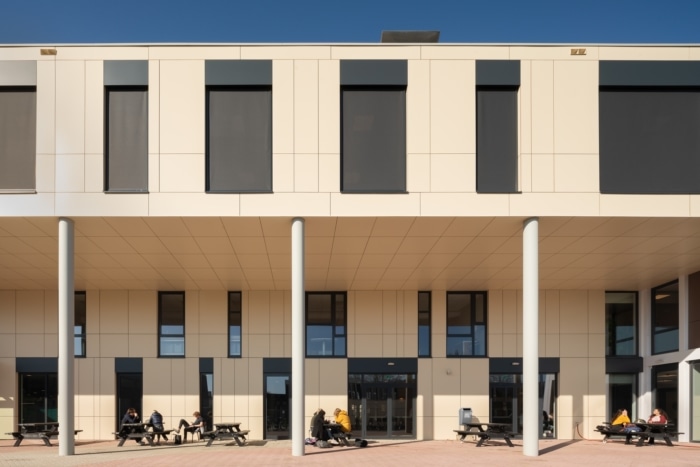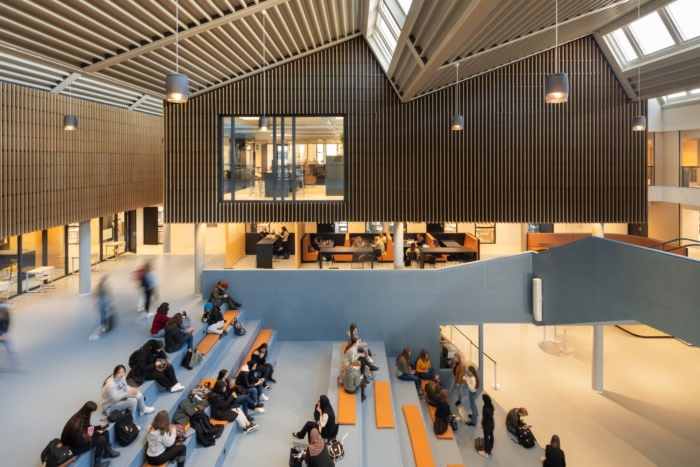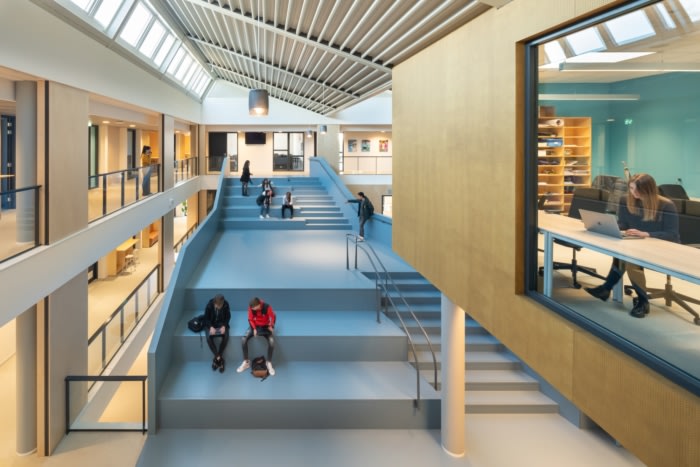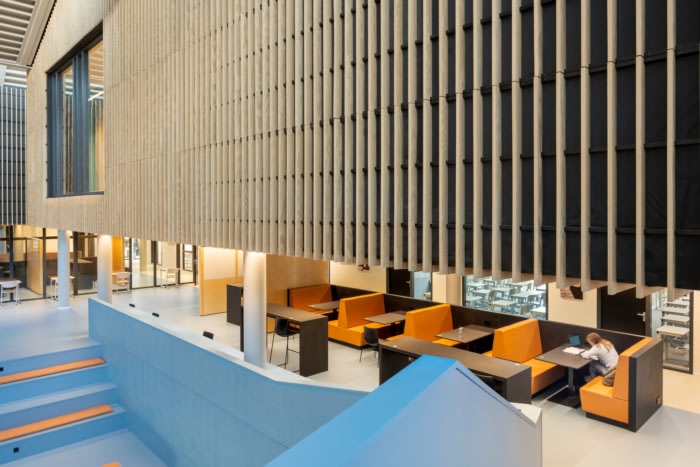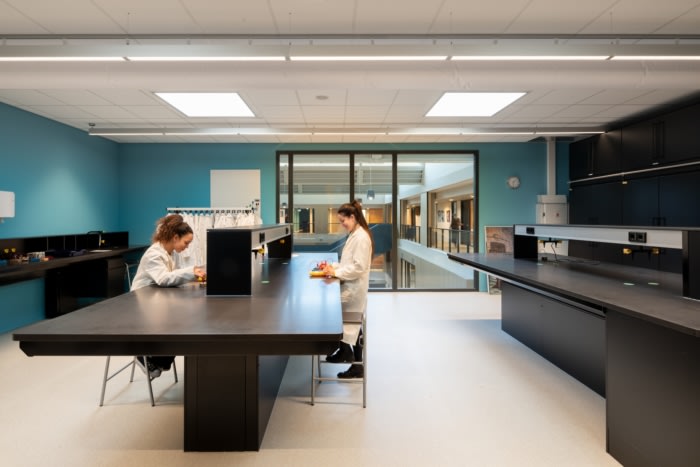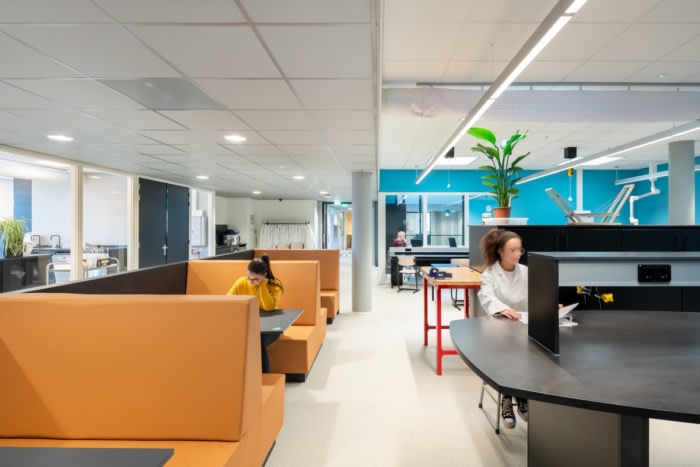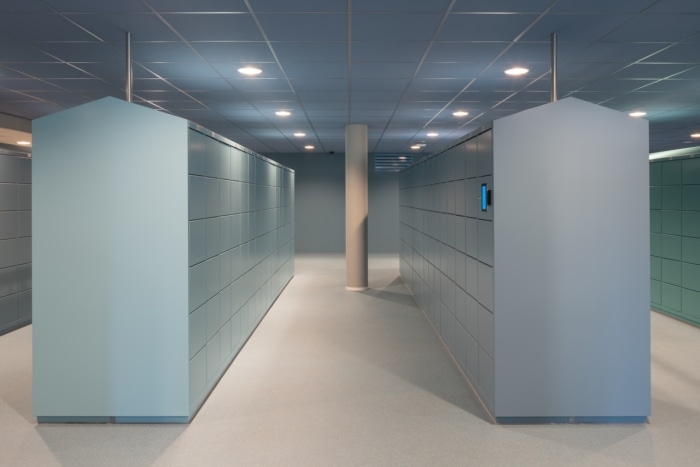Christelijk Lyceum Veenendaal High School
NOAHH | Network Oriented Architecture created the new and future-proof redesign for Christelijk Lyceum Veenendaal, a Dutch high school in Veenendaal, The Netherlands.
At the exact location where the Dutch High School Christelijk Lyceum Veenendaal opened its doors more than fifty years ago, a beautiful, future-proof and (almost) energy-neutral building has been constructed. Reuse, circularity, and identity are central to its regenerative design. For the interior design, NOAHH has collaborated with EX Interiors.
Circular, futureproof architecture
The two existing structures of the old school campus of the high school Christelijk Lyceum Veenendaal (CLV) have been transformed and connected to each other by adding a new volume: the new social heart of the school. The transparent volume between these two rigid existing structures creates a fluent transition from the interior to the exterior space, reinforcing the identity of the campus as well as amplifying the lush green landscape of the Kerkewijk neighbourhood. The school has high ambitions in terms of sustainability and circularity. Parts of the demolished building have been replaced by the new volume. The demolished structure’s concrete has been reused as granulate for the new structure and an innovative installation concept aims for an energy-neutral building.Social heart of the building
The school has literally and figuratively been opened up, creating an atrium between the existing structures with plenty of daylight that enters through the once commonly used local industrial shed roofs. By adding the central atrium in the new building, the two existing structures are relieved of traffic and can be arranged in a much more efficient and flexible manner, thus creating space for a social heart with learning landscapes. The classrooms, grouped in different clusters, are situated in a ring around the atrium, thus creating social space for the students to meet one another. Each cluster has its own identity, as can be seen in the Arts & Culture and Science departments, which are located in the wooden cabins above the learning landscape. Different types of formal and informal learning spaces are located all over the building. The petrol-coloured stairs are multifunctional and can be used for performances, lectures, meeting space, and lounging area for the students.We have explored how the multifunctional staircase can be more than just a functional connector. This resulted in a beautiful, iconic sculptural movement that also offered the opportunity to intertwine the open corridors and learning landscapes. The striking petrol colour was deliberately chosen as a complementary addition to the wooden look in the atrium. The staircase is made of rubber and meanders over the learning landscapes from the ground floor to the second floor. For the other floors, the linoleum has been replaced by a minimalistic trowelled floor.
Having an eye for detail
The spaces between the existing columns in the atrium have been used to place cupboards, seating, letterboxes and for ‘docking workstations’. By opting for a modular design and natural wood, the elements are fitted into the interior in a natural way. The space under the stairs accommodates a large number of steel lockers that have been coated in the same colour as the multi-functional learning landscape, which seamlessly integrates them into the volume of the stairs.
Architect: NOAHH | Network Oriented Architecture
Interior Architect: NOAHH | Network Oriented Architecture with EX Interiors
Project Management: HEVO
Contractor: Burgland Bouw
Installations Consultant: INNAX
Consulting Engineer: ZRi
Structural Engineer: Pieters Bouwtechniek
Photography: Katja Effting


